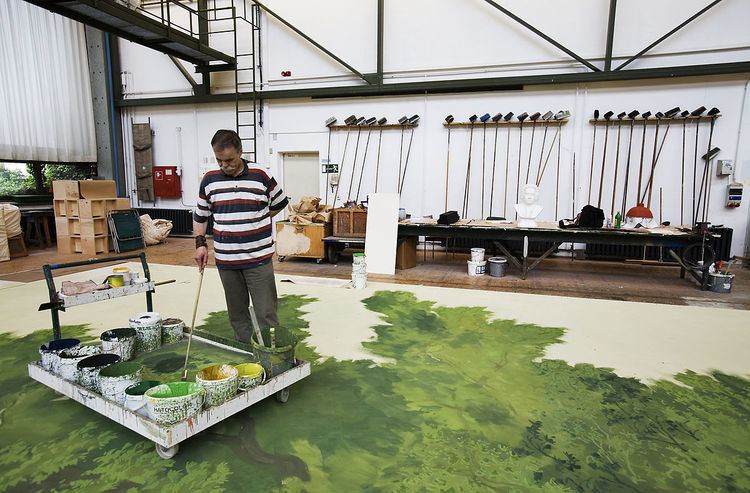 | ||
Theatrical scenic painting includes wide-ranging disciplines, encompassing virtually the entire scope of painting and craft techniques. An experienced scenic painter will have skills in landscape painting, figurative painting, trompe l'oeil, and faux finishing, be versatile in different media such as acrylic, oil, and tempera paint, and be an accomplished gilder, plasterer, and sculptor.
The techniques and specialized knowledge of the scenic painter in replicating an image to a large scale are largely different from those of the traditional studio artist.. In addition, he or she is often expected to make the finished product fire-proof, and to work quickly within a tight budget.
Traditionally, scenic painters are drawn from the ranks of scenic designers, and in some cases designers paint their own works. Increasingly scenic painting is looked upon as a separate craft, and scenic painters are expected to subordinate their skills to those of the designer. A designer submits scaled paintings, maquettes or photographs, perhaps with original research, and sometimes accompanied by paint samples; the painter is expected to paint scenery to match.
Scenic Paint
Scenic paint is composed of three parts: the binder, the pigment and the medium. The binder is what makes the paint adhere to the surface to which it is applied, the pigment gives the paint its color, and the medium is designed to disappear as the paint dries. Scenic paints provide a good binder that will adhere to a variety of surfaces, and (as much as possible) a single pigment color, which keeps the color of the stage light from affecting the perceived color of the paint.
Popular scenic paint brands include Rosco, Artist's Choice and Benjamin Moore. One of the most popular educational books about scenic painting is Scenic Art for the Theatre: History, Tools and Techniques by Susan Crabtree and Peter Beudert.
